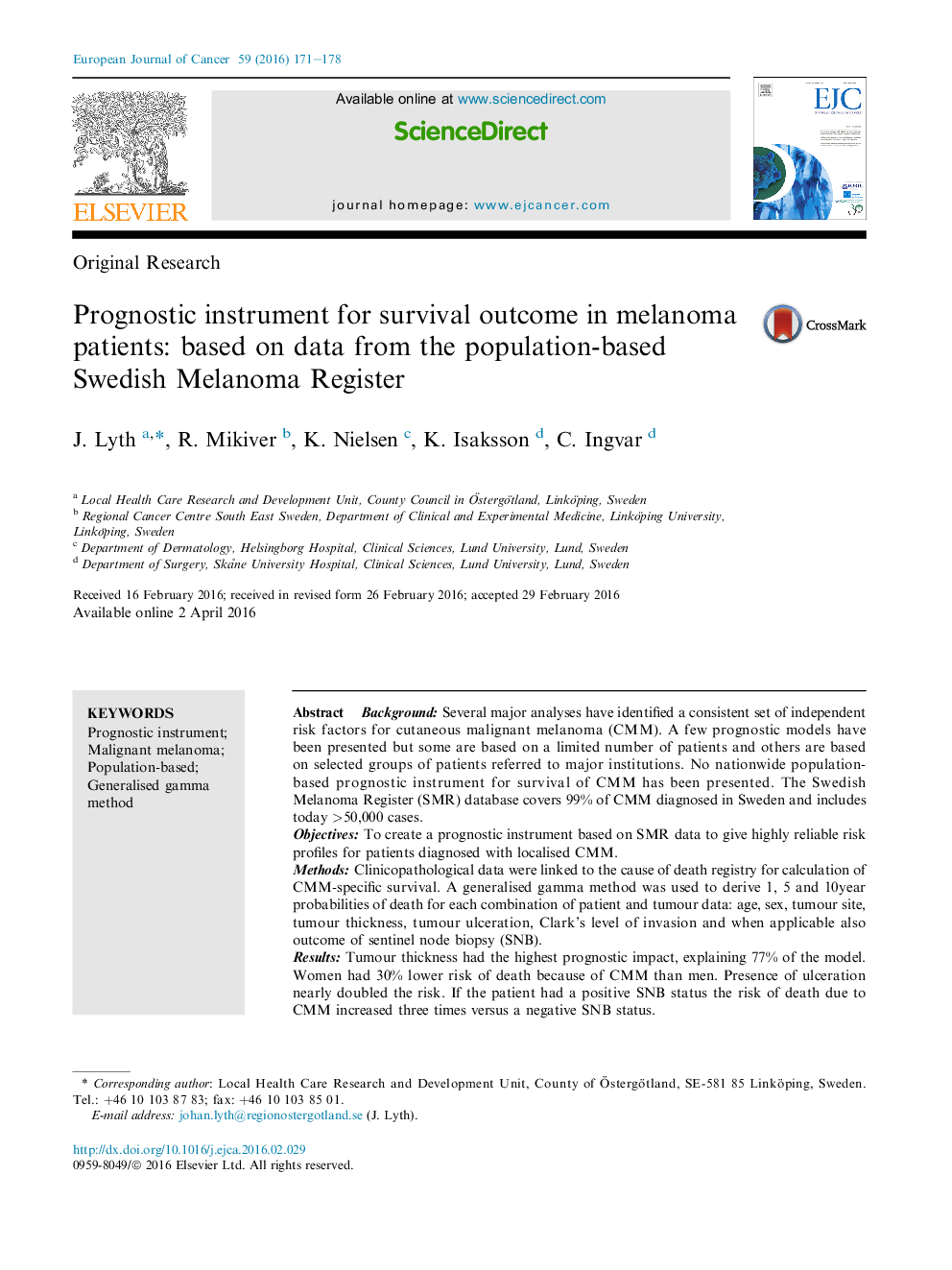| کد مقاله | کد نشریه | سال انتشار | مقاله انگلیسی | نسخه تمام متن |
|---|---|---|---|---|
| 2121489 | 1547077 | 2016 | 8 صفحه PDF | دانلود رایگان |

• A unique population-based nationwide prognostic instrument regarding melanoma specific survival of 50,000 patients with primary cutaneous malignant melanoma (CMM) 1990–2014.
• Tumour thickness had the highest prognostic impact, explaining 77% and 55% of the models without and with outcome of sentinel node biopsy (SNB), respectively.
• The prognostic instrument could be used with or without outcome of SNB.
• The instrument includes 99% of all primary CMM and gives a more favourable prognosis than the AJCC instrument, especially for thin melanoma, as the referral bias is avoided.
BackgroundSeveral major analyses have identified a consistent set of independent risk factors for cutaneous malignant melanoma (CMM). A few prognostic models have been presented but some are based on a limited number of patients and others are based on selected groups of patients referred to major institutions. No nationwide population-based prognostic instrument for survival of CMM has been presented. The Swedish Melanoma Register (SMR) database covers 99% of CMM diagnosed in Sweden and includes today >50,000 cases.ObjectivesTo create a prognostic instrument based on SMR data to give highly reliable risk profiles for patients diagnosed with localised CMM.MethodsClinicopathological data were linked to the cause of death registry for calculation of CMM-specific survival. A generalised gamma method was used to derive 1, 5 and 10year probabilities of death for each combination of patient and tumour data: age, sex, tumour site, tumour thickness, tumour ulceration, Clark's level of invasion and when applicable also outcome of sentinel node biopsy (SNB).ResultsTumour thickness had the highest prognostic impact, explaining 77% of the model. Women had 30% lower risk of death because of CMM than men. Presence of ulceration nearly doubled the risk. If the patient had a positive SNB status the risk of death due to CMM increased three times versus a negative SNB status.ConclusionThis unique population-based prognostic model for primary CMM shows better survival than the American Joint Commission on Cancer prognostic model widely used. The reason is probably that the referral bias is eliminated in a population-based cohort.
Journal: European Journal of Cancer - Volume 59, May 2016, Pages 171–178